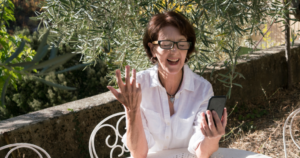Mention the word retirement at a neighborhood barbecue and you’ll hear two scripts: the fantasy of endless leisure or the fear of sliding into irrelevance.
Both miss a subtler reality I’ve witnessed across three decades of counseling older adults.
Some retirees carry an unmistakable lightness—posture straighter, laughter quicker—as though the clock rotated backward the day they accepted their farewell sheet cake.
Others fade, even with identical resources.
What separates these groups usually isn’t genetics or luck. It’s the rhythms they adopt once the office badge disappears.
Today we’ll examine nine routines that repeatedly surface in clients who tell me, with a grin, they “feel younger now than ten years earlier.”
Understanding these patterns matters not only for personal wellbeing but for a culture redefining the last third of life.
Nine micro-habits that rewind the clock — what they are and why they work
Youthfulness is less a single intervention, more an ecosystem of small, self-reinforcing practices.
Below are the routines I see most reliably linked to physical energy, cognitive brightness, and emotional buoyancy:
- A Monday appointment with movement
Rather than vague fitness goals, vibrant retirees schedule one standing activity at week’s start—pickleball doubles, tai chi in the park, sunrise laps. Anchoring motion on day one sets a tone that carries through Friday. - Curated news windows
They scan headlines during two brief slots and stay offline outside those windows. This cadence preserves curiosity while preventing information fatigue that can age the nervous system. - Deliberate breathwork during transitions
Three slow exhalations when the kettle whistles or traffic light turns red turn ordinary pauses into parasympathetic resets. Blood pressure drops, mental focus returns. - Quarterly skill sprints
Every three months, they choose a micro-skill—spoon-carving, basic Spanish, slackline balancing—and practice fifteen minutes daily for thirty days. Mastery matters less than neuroplastic stretch. - Micro-mentoring
Instead of multi-year commitments, they offer bite-sized guidance: reviewing a grand-niece’s résumé or coaching a neighbor’s science fair idea. Purpose without overwhelm keeps mood elevated. - Evening light hygiene
Ninety minutes before bed, overhead bulbs dim, warm lamps glow, and phones stay in another room. Melatonin rises naturally, deep sleep follows, growth hormone does its nocturnal restoration. - Plant-forward breakfast ritual
Smoothie, oats, or egg-and-greens—always with produce front-loaded. Anti-inflammatory nutrients at sunrise blunt joint aches that often signal “feeling old.” - Weekly “awe walk” in a familiar place
They revisit the same shoreline, botanical path, or urban mural corridor, aiming to notice one new detail each time. Repetition plus novelty trains attention and gratitude. - Two-sentence daily reflection
Before lights out, they jot one highlight and one lesson learned. This concise scan integrates experience and guards against rumination, a key driver of perceived aging.
Individually modest, these routines interact: richer sleep fuels morning movement; movement heightens learning capacity; learning amplifies purpose; purpose encourages reflection.
The compound effect emulates the resilience we associate with younger years.
Why this small-routines approach matters — the deeper tension
Retirement, as a social contract, emerged when average life expectancy barely exceeded sixty-five.
Work ceased and mortality soon followed; vigor had little runway to erode. Today’s retirees may live thirty additional years.
The expectation-reality gap—ample time versus uncertain vitality—creates an existential tension.
Many plan finances meticulously yet overlook daily structure. Identity once tethered to meetings and metrics suddenly drifts. My counseling sessions often begin with, “I waited decades for freedom, now I’m adrift.”
Beneath the surface is a struggle for psychosocial homeostasis: the need to feel competent, connected, and in control.
The nine routines quiet that tension by supplying bite-sized mastery, social micro-engagement, and physiological regulation—ingredients once provided externally by work.
Myths that muddy the water — what gets in the way
Culture rarely sells moderation. Headlines celebrate retirees who summit Kilimanjaro or launch tech startups at seventy. While inspiring, such stories oversimplify the path toward vitality. Four myths dominate coverage:
- “Go big or go home.” Giant goals feel motivating on paper yet often paralyze in practice, triggering avoidance and guilt.
- “Youthfulness equals appearance.” Anti-wrinkle serums eclipse discussions of neurobiology, sleep architecture, and social capital that truly extend healthspan.
- “Leisure heals all.” An endless vacation can dull cognition; the brain thrives on mild challenge.
- “More data equals better aging.” Wearables deliver metrics, but without context they morph into stressors—another performance scoreboard replacing the old one.
These narratives reflect media over-simplification: complex biopsychosocial phenomena flattened for clicks. They distract retirees from patient, iterative habit craft—the soil where long-term vigor actually grows.
The Direct Message
You won’t borrow youth from a single daring adventure; you’ll grow it daily through quiet, repeatable rhythms that satisfy the body’s need for movement, mastery, and meaning.
Translating insight into daily life — integrating the nine routines
Recognizing the pattern is the first step; weaving it into lifestyle requires deliberate choice. Start with three principles drawn from historical parallels:
1. Rhythm over intensity
Think of nineteenth-century farm communities. Work unfolded in predictable cycles: dawn chores, midday rest, twilight gathering. Health researchers now confirm that circadian regularity—consistent sleep-wake and meal times—regulates hormones, mood, and cellular repair. Adopt routines at the same times each day. Consistency signals safety to the nervous system, allowing growth processes to flourish.
2. Communal micro-contributions
Historically, elders transmitted craft secrets, herbal knowledge, and stories that bound villages together. Micro-mentoring honors that legacy. Offer focused assistance where your expertise sparks immediate value. One short session per week keeps social neural circuits active and reinforces self-efficacy without exhausting energy reserves.
3. Curated novelty
Explorers of earlier centuries injected adventure in measured doses—seasonal journeys, annual fairs—then returned to stable homesteads. Translate this pattern: quarterly skill sprints and weekly awe walks deliver novelty buffered within steady surroundings, stimulating dopamine pathways associated with motivation and learning while avoiding chronic overstimulation.
Implementing your first routine
Choose the easiest win—perhaps the Monday movement anchor. Place it on your calendar with location, partners, contingency plan for weather. Tell a friend; social commitment increases follow-through. After two weeks, layer an evening light routine by setting phone alarms that cue lamp use and device exile. Continue stacking at a sustainable pace; research suggests one new habit every four to six weeks preserves willpower.
Measuring genuine progress
Instead of chasing numerical biomarkers exclusively, track subjective metrics aligned with youthfulness: morning enthusiasm, sense of balance, social spontaneity. Write ratings next to the two-sentence nightly reflection. Trends will reveal which routines require adjustment.
Dealing with disruptions
Life events—grandchild visits, travel, health hiccups—will scramble rhythms. Adopt a “minimum viable practice” mindset: one sun salutation instead of full tai chi set, five-minute Spanish podcast instead of thirty-minute lesson. Maintaining identity as a practitioner, even in slim form, sustains psychological continuity.
Cultivating an aging-well community
Share discoveries with peers. Form small circles where members exchange skill-sprint ideas or lead awe walks. Community conversation shifts focus from deterioration to discovery, reinforcing the cultural narrative that later life can be expansive, not reductive.
Retirement no longer signals an epilogue; it inaugurates a sprawling third act.
That stage feels youthful not through radical transformation, but through nine modest routines tuned to human physiology and psychology.
Adopt them, iterate gently, and you may find yourself moving through days with the restless curiosity you once reserved for childhood summers.







